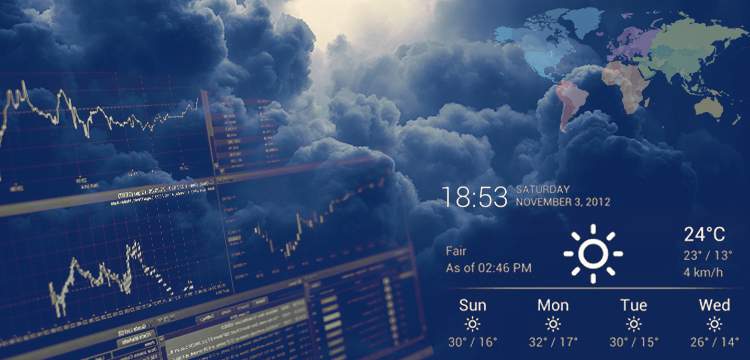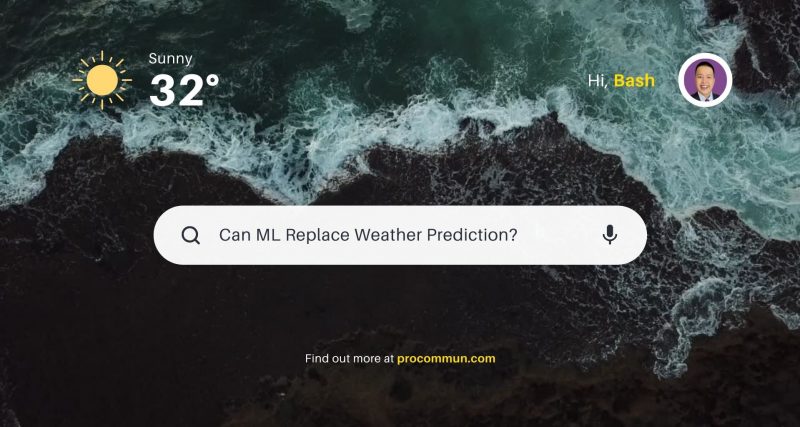With the rise of technology, more people are turning to machine learning (ML) for different applications. One particular area where ML is being used is weather forecasting. While traditional weather prediction methods are widely used nowadays, many areas still need improvement. ML can help weather forecasters improve their predictions by analyzing data from the past and present.
How Does Traditional Weather Prediction Work?
Most traditional weather prediction relies on numerical weather prediction (NWP). NWP models use mathematical equations to predict the atmospheric conditions over an area. The equations take into account several different factors, including temperature, pressure, humidity, winds, etc. These factors affect each other, so they must be considered when trying to accurately predict what will happen next.
However, the problem with traditional weather prediction is that it can’t always provide accurate results. Complexity and large datasets make it difficult to create an accurate model that predicts future weather in all situations. As a result, people who rely on weather predictions for weather routing, air travel, or agriculture are negatively impacted by inaccurate forecasts.
ADVERTISEMENT
Why Use Machine Learning For Weather Forecasting?
Since traditional weather prediction uses a large amount of human input, it can be difficult to achieve the right results every time. In fact, some may even think that it takes too much effort to try and predict the weather accurately. However, when ML is used in weather forecasting, it can provide the following:
1) Accurate Predictions
One of the biggest benefits of using ML is providing accurate predictions. Since ML algorithms learn from previous data, they can adapt to new situations and make changes accordingly. Because of this, ML can produce highly accurate predictions even though they were never trained on that type of data before.
There’s no need to manually enter all of the variables required to make a good prediction. Instead, ML does it for you.
ADVERTISEMENT
Bash Sarmiento
2) Better Modeling
Another advantage of ML is that it provides a way for scientists to build more realistic models. By taking into account real-world variables, such as ground temperatures, cloud cover, and wind patterns, researchers can create more detailed models that provide better representation. This also gives them insight into the mechanisms behind the formation of weather systems, leading to an improved understanding of climate change and global warming.
3) More Realistic Data
There are different types of weather data available for scientists and researchers to analyze. However, most of these datasets consist of averages and do not reflect the true variability in the weather system. ML algorithms can help overcome this issue by creating models that use real-time data and incorporate actual environment measurements.
4) Increased Accessibility
ML algorithms have been developed to run on mobile devices and small computers, making it possible for anyone to access weather forecasting tools regardless of their geographical location. This makes it easier than ever for people to track local weather events and improve their chances of predicting the weather correctly. Whether you’re on your phone or on the laptop, weather predictions are easier to access.
ADVERTISEMENT
Current Limitations of Machine Learning for Weather Prediction
Although there are many advantages to using machine learning for weather prediction, it still has limitations. These limitations aren’t hindrances. Rather, they should be seen as areas of improvement for ML.

1) Possible Overfitting
Overfitting refers to the tendency of an algorithm to memorize training data rather than generalizing to unseen cases. If this happens, an algorithm will eventually become unable to accurately predict anything but the specific training data set used to train it. While overfitting can sometimes be beneficial, it can also cause problems. In weather prediction, overfitting may result in problems such as poor performance because the model did not consider local conditions.
2) Lack of Scalability
The size of the dataset used to train an algorithm has a huge impact on how well it performs.
Bash Sarmiento
When it comes to machine learning the datasets means better models.. But what if the amount of data increases exponentially? For example, imagine that we want to train an algorithm to predict the next day’s weather based on today’s weather. At first, this training would seem like an easy task. However, this becomes impractical at some point because we’d need to store all of the previous days’ data. In other words, scaling up our dataset would require increasing our storage capacity.
3) Difficulty with Unpredictable Variables
Even though ML can handle unpredictable factors, some variables may still be too varied. For example, although we know that thunderstorms tend to follow certain patterns and locations around the world. However, due to climate change and natural disasters, thunderstorm activity varies greatly depending on where you live.
The Bottom Line
In summary, ML can significantly impact how scientists approach weather research. It can allow scientists to come up with sustainable strategies in weather prediction and better understand the underlying mechanisms behind the weather. Although it’s inevitable to encounter some limitations, advancements in technology can slowly contribute to solving those issues.
Bonus Tip: Consider doing fun and different activities every day. This has proven to be a very strong point for many people to turn their day around. Try adding small elements to your daily routine that will have a tiny positive effect on your life. Watching a funny video, reading an inspirational quote, and visiting fun sites like fortune-telling websites, could have a positive effect on your life.








